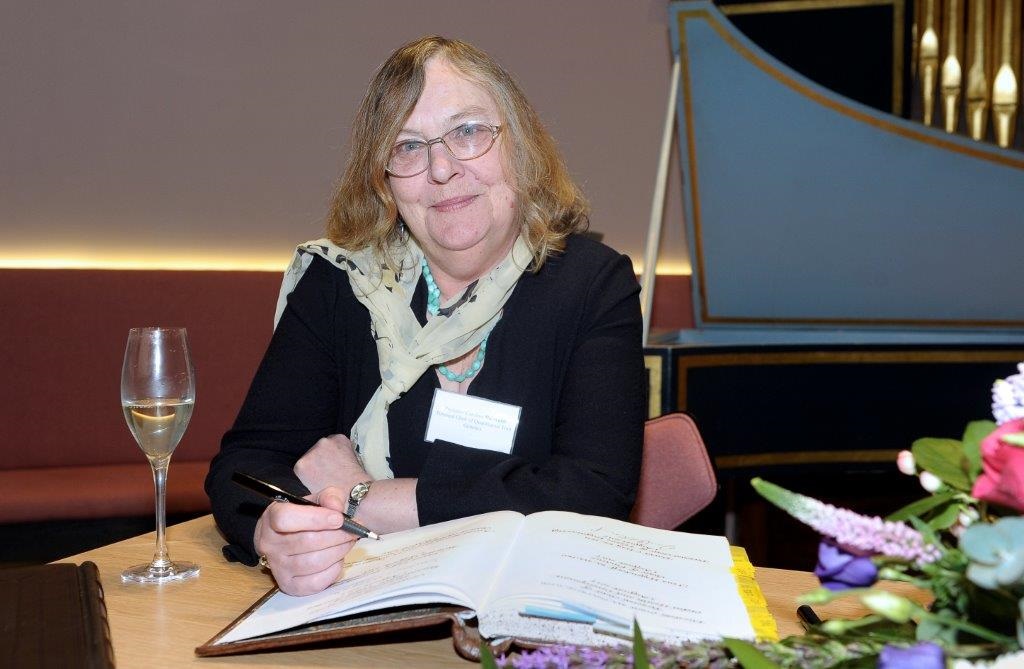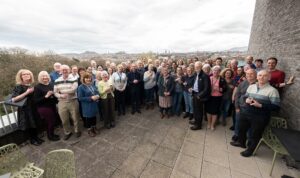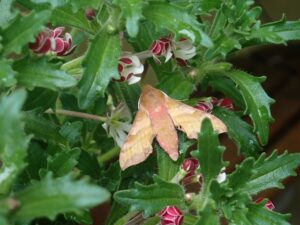Professor Caroline Hayward: An interview celebrating 45 years of service

By Caroline Hayward and Shona Kerr
Professor Caroline Hayward has decided to retire, after 45 years of service between the University and the MRC Human Genetics Unit. In January 2024 the Senatus Academicus conferred on her the title of Professor Emeritus. We wanted to learn about her career, so project manager Shona Kerr interviewed her over a cup of tea, and plenty of cake:
How did your career begin?
I was always interested in science and nature and was greatly inspired by my Biology teacher at Golspie High School in Sutherland. Alan Joyce encouraged keen individuals to participate in all aspects of scientific investigation and included such fun things as field trips to do real science, although he was less keen on the approved curriculum. Despite this I managed to pass my higher biology as well as maths, chemistry and physics and go to university.
I graduated with a BA in Biochemistry from the University of Stirling in 1975. I then spent three years as a Scientific Officer in the Scottish National Blood Transfusion Unit at Law Hospital. That training has stood me in good stead throughout my career. But routine laboratory work was rather predictable and in my third year I was given the opportunity to work in the research arm of the unit and loved it. While there I worked alongside Ian Deary, who remains a good friend and colleague, and is also now an Emeritus Professor at the University of Edinburgh!
When did you move into research, and why?
In 1978, I got married and moved to Edinburgh and joined the Human Genetics Department at the University of Edinburgh, led by Professor Alan Emery, as a research technician. I started in David Brock’s laboratory, working on prenatal diagnostics of foetal abnormalities such as Spina Bifida and Anencephaly. The research interests of the department were very diverse and work flexibility was encouraged. This included early research on Cystic Fibrosis (CF) and led to my first paper in the Lancet the title of which contains the longest words of all my publications (Methylumbelliferyl-guanidinobenzoate reactive proteases and prenatal diagnosis of cystic fibrosis D J Brock, C Hayward PMID: 87713). Subsequently, I became a Research Associate and in collaboration with Veronica van Heyningen then focussed on the study of CF. I studied for my PHD (part time) and continued with CF as my main research interest. This led to me graduating with a PhD, “Biochemical Studiesof Cystic Fibrosis Antigen”, from the University in 1987.
What next?
After a postdoctoral fellowship continuing my work on CF, exciting funding opportunities arose to redirect my research from protein-based analyses to molecular genetic studies of both Mendelian and complex diseases including Marfan Syndrome, Motor Neuron Disease and Pre-eclampsia. In 2000 I moved to the MRC Human Genetics Unit to the new programme “Quantitative Traits in Health and Disease” led by Professors Alan Wright and Nick Hastie. This involved overseeing and organizing the setting up and design of several population cohort collections as well as directing the laboratory and data analyses. I played a major role in the ”10001 Dalmations” project, which included isolate populations from the beautiful islands of Vis and Korcula in Croatia. In collaboration with Professors Harry Campbell, Igor Rudan and Ozren Polasek, I was responsible for setting up the field clinic and laboratory facilities on Korcula, and have subsequently led the analysis of many phenotypes in the resulting dataset.
What else?
In parallel with this, I also investigated the genetics of the rare Mendelian disorder Late-onset Retinal Degeneration. I was a key part of the team that successfully identified the gene (C1QTNF5) and the main causative genetic mutation, which is now being investigated at the University as a potential gene-therapy target.
When did you become a PI?
Since 2012 I have been a Principal Investigator and Programme Coordinator of the MRC-funded QTL in Health and Disease Research Programme at the MRC Human Genetics Unit, alongside Professor Jim Wilson, Professor Chris Haley and Dr Veronique Vitart. This programme closed in 2023, after producing over 500 research papers! There are still many papers in the pipeline, and the outputs will continue for years to come.
Sounds like you enjoy working collaboratively?

Caroline and colleagues celebrate her retirement on the roof terrace
Yes! I have contributed to many UK and international collaborations and consortia, including SPIROMETA, CKDGen, CHARGE, ORCADES, Viking Health Study Shetland and Generation Scotland. I was a member of the Steering Committee for several international projects involving the data generated by these studies, including two European FP7 research programs (MIMomics and High Glycans), as well as Co-I on several other projects. I am currently a co-PI for NextGenScot, and lead the Quantitative Trait Working Group for Generation Scotland.
When did you become Professor?
In 2017 I was awarded a personal chair in Quantitative Trait Genetics. My group bought me an actual chair to mark the occasion!
That’s thirty years after you finished your PhD?!
It hadn’t really crossed my mind to apply for a Personal Chair. I was very busy and enjoying my research. Many of my collaborators assumed I was already a Professor and were genuinely surprised when I asked them for references.
I realise that over the years, particularly in the eighties and nineties, women were mostly not considered seriously for senior academic positions. More recently, despite attempts at improving the situation, there is still a big imbalance of male to female Professors at this and almost all other Universities. A waste of talent in my opinion!
What are your retirement plans?

Photograph captured by Caroline
In my retirement, I plan to continue my involvement with the NextGenScot and Generation Scotland studies. I also plan to spend a lot more time gardening, and pursuing all my other interests and hobbies that have taken a back seat for so many years.
This also includes revisiting an interest I had while at school – I am a keen surveyor of moth populations! Just as well that nowadays the specimens are no longer killed and pinned, but are photographed and released. They are amazingly beautiful.




Amazing career and fantastic human being. All the best, Caroline.